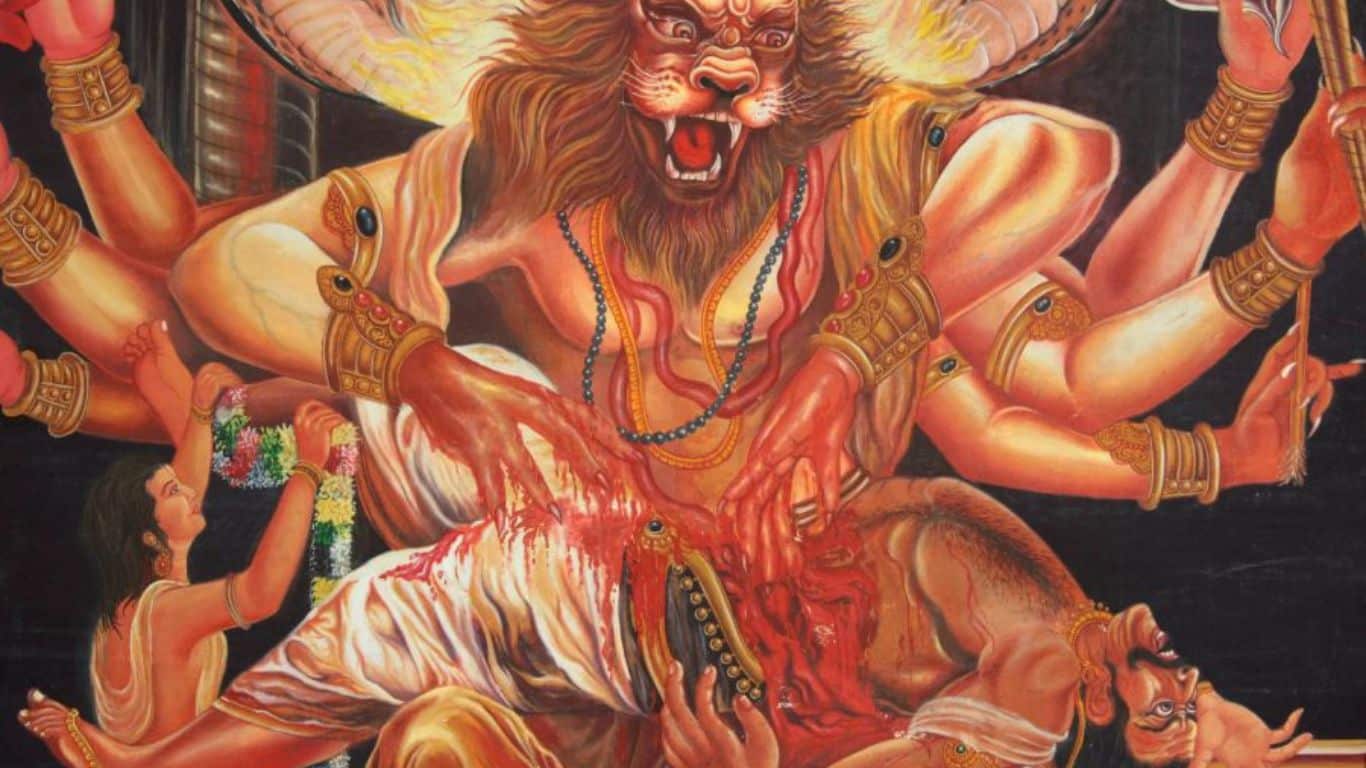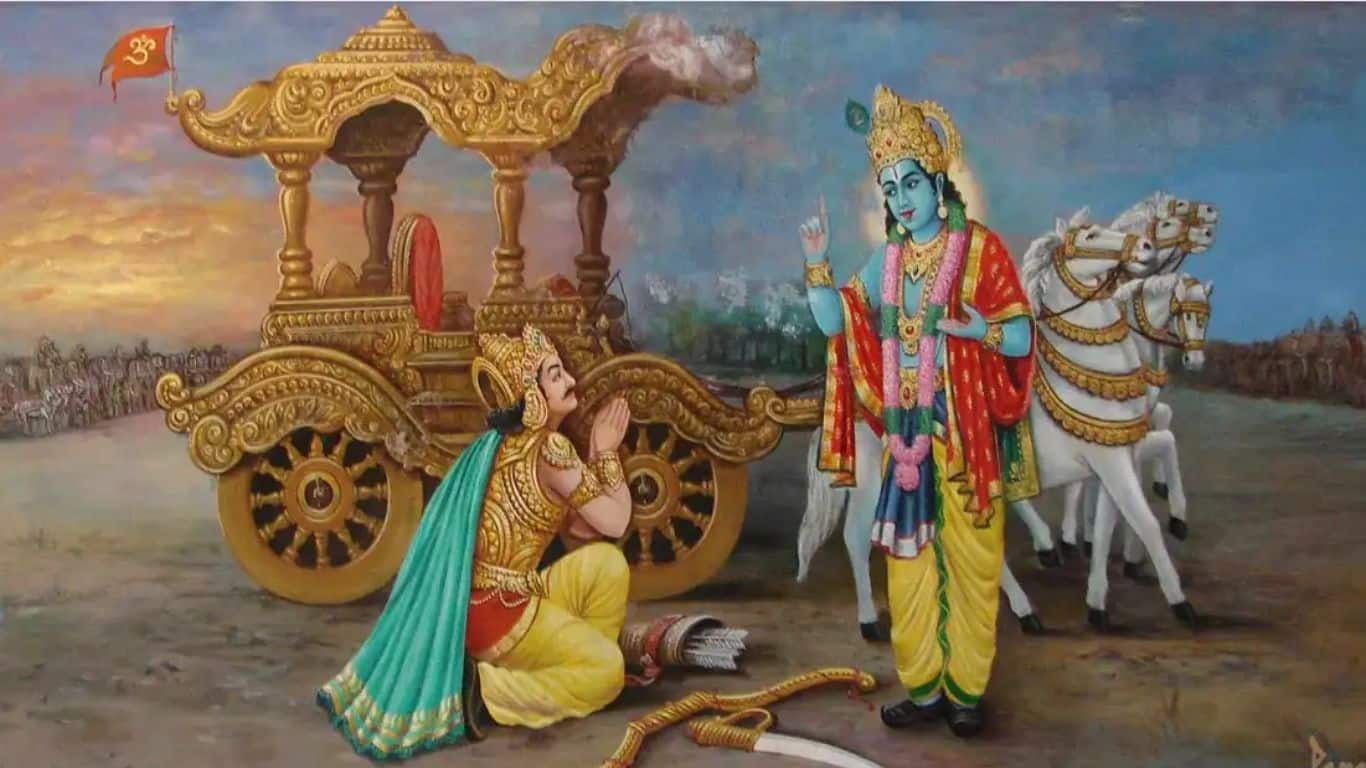In Hinduism, Vishnu is one of the three main deities and is considered the preserver of the universe. According to tradition, Vishnu incarnates on Earth from time to time to restore balance and destroy evil. These incarnations are known as avatars, and ten of these avatars are considered the most significant. These ten avatars of Vishnu, also known as the Dasavatara, include Rama, the hero of the Ramayana, and Krishna, the cowherd and central figure in the Bhagavad Gita. Here are Ten avatars of Vishnu, including Rama and Krishna.
Ten avatars of Vishnu, including Rama and Krishna
Matsya (the fish)

Matsya is the first avatar of Vishnu in the ten primary avatars known as Dasavatara. According to Hindu mythology, Matsya appeared at the beginning of the current Kalpa (a cosmic cycle) to save the world from a great flood. The story goes that the demon king, Hayagriva, had stolen the Vedas (sacred texts) and hidden them at the bottom of the ocean. The god Brahma, who is responsible for creation, asked Vishnu for help in recovering the Vedas. In response, Vishnu took the form of a fish and dove into the ocean. He then caught and defeated Hayagriva, recovering the Vedas and returning them to Brahma.
In the story of Matsya, the first avatar of Vishnu, he not only saved the Vedas and defeated Hayagriva but also warned and provided a boat for the seven sages, the seed of all creatures and the king Manu to save them from the flood. Matsya is often portrayed as a giant fish with a human face, this avatar is linked to the preservation of knowledge, the beginnings of creation, and also as a savior and protector of the world.
Kurma (the turtle)

Kurma appeared during the Sagara Manthan, the churning of the ocean of milk. The gods and demons wanted to obtain Amrita, the nectar of immortality, which was believed to be hidden in the depths of the ocean. However, they could not churn the ocean without a suitable base for the churning rod. Vishnu then took the form of Kurma, a giant turtle, and offered his back as the base for the churning.
In this Avatar Kurma holds the mandala (cosmic disc) on his back and supports the entire process of Sagara Manthan, helping the gods and demons to achieve their goal and acquire Amrita. Kurma is often depicted as a giant turtle with a human face and is associated with the support of the universe, the acquisition of knowledge and immortality, and the power of patience. He is also considered a stabilizer and a foundation for the world.
Varaha (the boar)

Varaha appeared to rescue the earth goddess, Bhudevi, from the demon king, Hiranyaksha. The demon king had taken Bhudevi and hidden her in the depths of the cosmic ocean. Vishnu then took the form of Varaha, a giant boar, and dove into the ocean to find her. He fought and defeated Hiranyaksha, lifting Bhudevi out of the ocean and restoring her to her rightful place.
In this avatar, Varaha is often depicted as a giant boar with a human face, holding Bhudevi on his tusks. He is associated with the power of protection, the rescue of the earth, and the defeat of evil forces. He is also considered a symbol of sacrifice, strength, and determination.
Narasimha (the man-lion)

Narasimha appeared to protect his devotee Prahlada, who was being persecuted by his demon king father, Hiranyakashipu. Hiranyakashipu had gained a boon that he could not be killed by any human, animal, or weapon, and used it to terrorize his subjects. Prahlada, a devout follower of Vishnu, refused to worship his father and was subjected to many forms of punishment. Vishnu, moved by Prahlada’s devotion, incarnated as Narasimha, a half-man half-lion being. He killed Hiranyakashipu by attacking him at sunset, when neither man nor animal, at the threshold of a courtyard, using his nails as weapons.
In this avatar, Narasimha is often depicted as a fierce-looking being with a lion’s head and a human body. He is associated with the power of protection, the triumph of good over evil, and the protection of the innocent. He is also considered a symbol of courage, ferocity, and the defense of dharma (righteousness).
Vamana (the dwarf)

Vamana appeared in the Treta Yuga to restore the balance of power between the gods and demons. The demon king, Bali, had become too powerful and was threatening the stability of the universe. Vamana, in the form of a dwarf, approached Bali and asked for three paces of land. Bali, known for his generosity, granted the request without hesitation. Vamana then revealed his true form and with his first step covered the heavens, with his second step he covered the earth, and with his third step, he pushed Bali to the netherworld.
In this avatar, Vamana is often depicted as a dwarf with a staff in his hand and a water pot on his shoulder. He is associated with humility, wisdom, and the restoration of balance and order. He is also considered a symbol of the power of small things, the importance of humility and the victory of good over evil.
Parasurama (the warrior with an axe)

According to Hindu mythology, Parasurama appeared in the Treta Yuga to avenge the killing of his father, a Brahmin by the warrior class called Kshatriyas. He then went on a killing spree and destroyed all the Kshatriyas on earth 21 times, to rid the earth of their oppression and restore the balance of power between the classes.
In this avatar, Parasurama is often depicted as a warrior holding an axe and a bow. He is associated with the power of righteousness, the restoration of balance, and the protection of the oppressed. He is also considered a symbol of the importance of justice, the power of one’s actions, and the protection of society’s weak. He is believed to be still alive and the teacher of Bhrahma and the warrior-sage Dronacharya.
Rama (hero of the Ramayana)

Rama is the hero of the Hindu epic Ramayana, written by the sage Valmiki. The story of Rama is a classic tale of good versus evil, and is considered one of the greatest stories ever told in India. The story goes that Rama, the prince of Ayodhya, is exiled to the forest for 14 years by his father King Dasharatha, under the influence of his second wife Kaikeyi. During his exile, Rama’s wife Sita is kidnapped by the demon king, Ravana. Rama, with the help of the monkey king Hanuman and his army, goes on a quest to rescue Sita and defeat Ravana. Along the way, he faces many obstacles and challenges but ultimately emerges victorious, rescuing Sita and returning to Ayodhya as a hero.
Rama is revered as the epitome of righteousness and morality, as well as being the perfect son, husband and king. He is acknowledged as an incarnation of Vishnu, due to his unwavering commitment to his duty and adherence to the principles of dharma. He is widely worshiped across India and holds a significant place in Hinduism.
Krishna (the cowherd and central figure in the Bhagavad Gita)

Krishna is a central figure in Hinduism and is considered one of the most loved and revered deities in the religion. He is the cowherd and the prince of Dwaraka, who lived during the Mahabharata era. Krishna is famous for his role in the Bhagavad Gita, a sacred Hindu text where he imparts knowledge and spiritual wisdom to the warrior Arjuna on the battlefield of Kurukshetra. He is also known for his mischievous childhood pranks, and his love for Radha. He is considered the embodiment of love and devotion, and is widely worshiped as a divine lover and a protector of humanity.
He is also considered to be an incarnation of Vishnu, and is known for his role in the Mahabharata war, where he acted as a charioteer for Arjuna and helped the Pandavas win the war. He is widely worshiped across India, and holds a significant place in Hinduism.
Buddha (the sage and founder of Buddhism)

It is uncertain whether Buddha was an avatar of Lord Vishnu or not, but most of the time he is considered as the 9th avatar. Buddha, also known as Siddhartha Gautama, was a prince who lived in India around 500 BCE. He left his palace to seek enlightenment and eventually attained it under the Bodhi tree. He spent the rest of his life spreading his teachings, which became the foundation of Buddhism. His teachings, also known as the Dharma, center around the Four Noble Truths and the Eightfold Path.
The Four Noble Truths are the truth of suffering, the truth of the cause of suffering, the truth of the cessation of suffering, and the truth of the path leading to the cessation of suffering. The Eightfold Path is a practical guide to living a moral life and achieving enlightenment. Buddha is considered a sage and a teacher, who taught the path of spiritual awakening and inner peace. He is widely revered as a symbol of wisdom, compassion, and peace. Buddhism, which is based on his teachings, is a major world religion with around half a billion followers.
Kalki (the final and future avatar)

Kalki is the final and future avatar of Vishnu in the ten primary avatars known as Dasavatara in Hinduism. According to Hindu prophecy, Kalki is expected to appear at the end of the current age, known as the Kali Yuga, and will usher in a new era of righteousness and prosperity. He is often depicted as a warrior riding a white horse, with a sword in hand, ready to destroy the forces of evil and restore order to the world. He is also said to have supernatural powers and is considered the destroyer of ignorance and the restorer of knowledge.
With his role as a destroyer of evil, Kalki is also seen as a savior, who will rebuild the world after the apocalypse, and is also believed to be responsible for the return of the golden age of humanity. He has not yet appeared in human history and his appearance is expected to be in the future. He is widely worshiped across India and holds a significant place in Hinduism.
Also Read: 10 Points That Prove Avatar is Inspired by Hindu Mythology


